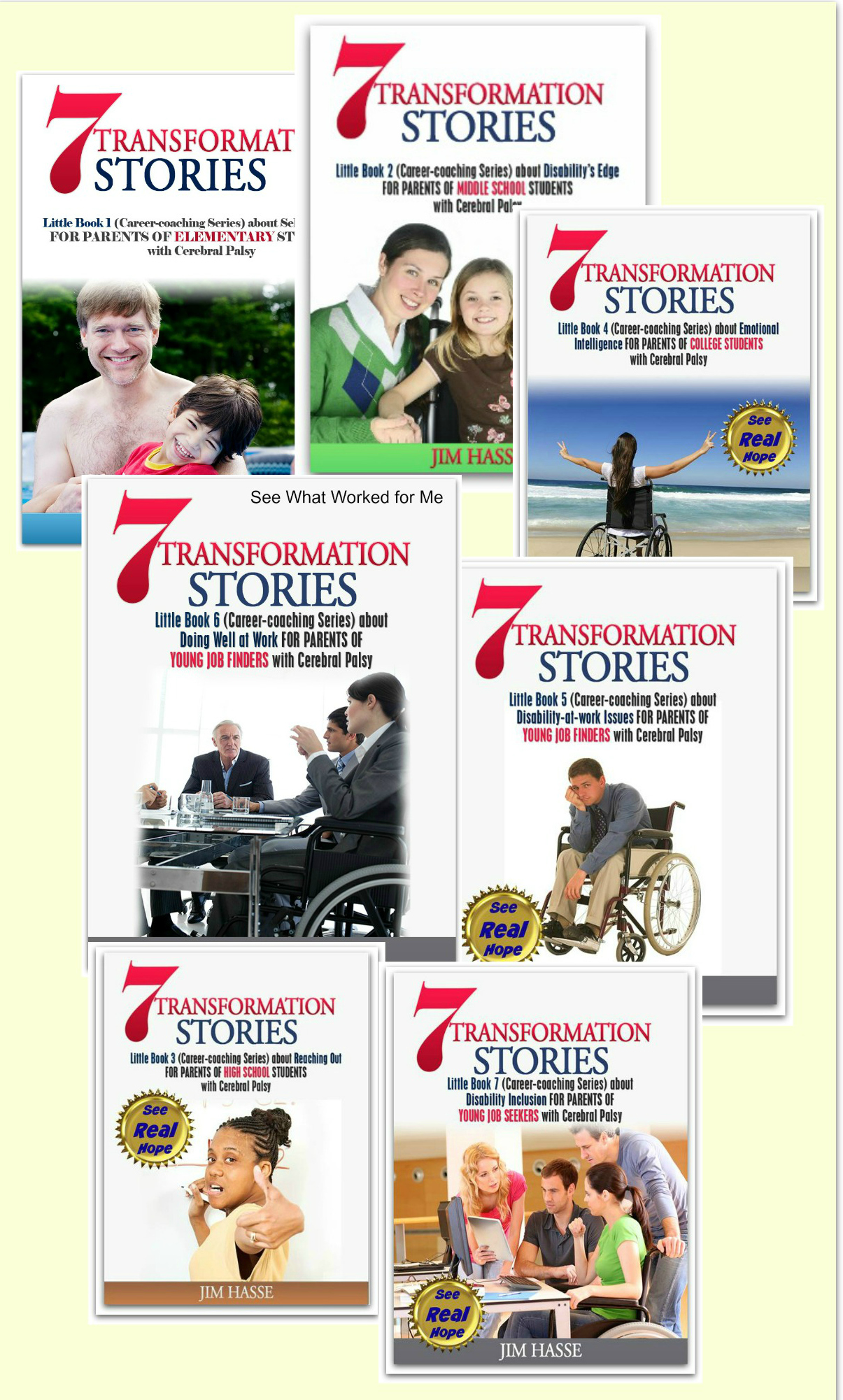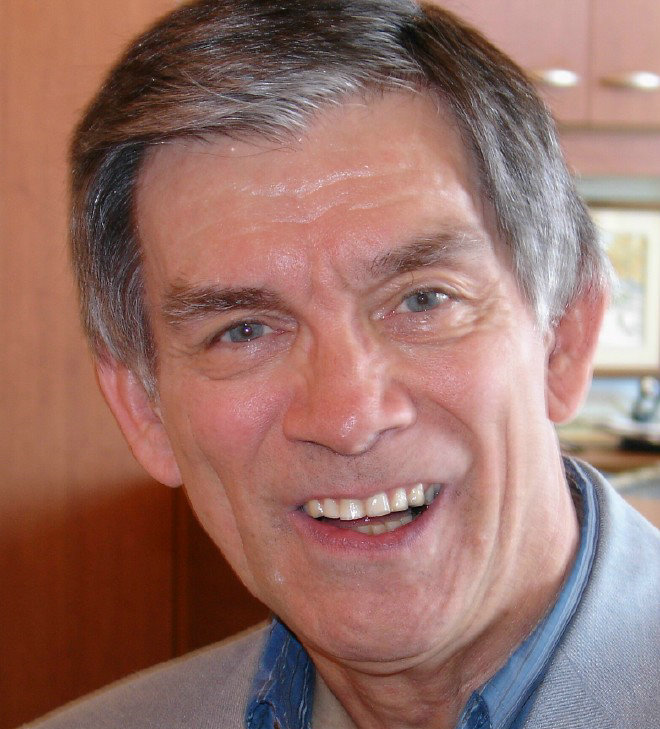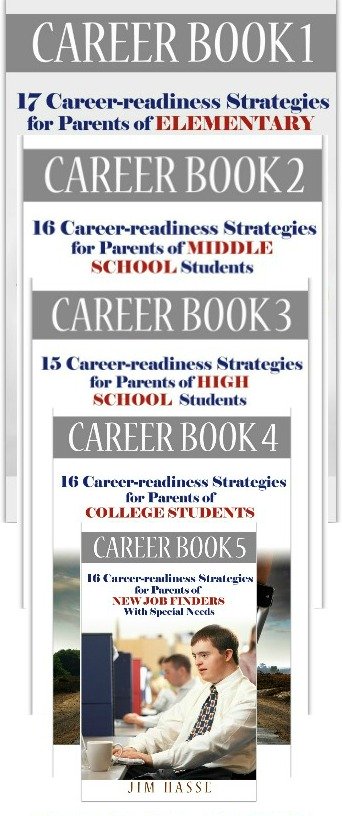Teamwork Building: Cerebral Palsy Career Builder for Elementary Students
By Jim Hasse, ABC, GCDF, Disability Employment Expert
_________________________________________________________
Teamwork building for the elementary student with cerebral palsy (CP) you’re mentoring sometimes gets down to turning around the idea that individuals with disabilities are takers and not givers.
“Learned helplessness” was not a common concept when I was in elementary school. But, somehow my mom knew it was a pitfall to avoid. I still remember the anguish I’d feel each morning when I was about six. I knew I would have to tie my own shoes. I had no option.
Of course, Mom could have easily tied my shoes for me. I could have learned to always be a taker – to always receive help, even though I knew I could help myself.
Turning that thinking around – that I was entitled to always receive help instead of sometimes giving it to others – came as a result, I believe, of my home environment, where teamwork building was a skill developed as a result of doing chores.
Growing up on a Wisconsin dairy farm in the 1950s meant everyone in the family pitched in to get the barn and household chores done during the winter months. During summertime, there were pies to bake for the extra field hands and gathering, gardening and canning to do.
Gardening was my task, and I remember sitting and crawling between the rows of peas, pulling weeds.
What
simple tasks have you found effective
in developing a “giving mode”
in your child with unexpected challenges?
Join
PACER’s Facebook
discussion.
Somehow, the teamwork building I saw on a daily basis before I entered school as a second grader (my mom taught me first grade at home) stuck with me as I grew up. I knew I had an obligation to others.
Maybe that’s why this quote from William Penn is still meaningful for me:
"I expect to pass through life but once. If, therefore, there can be any kindness I can show, or any good things I can do to any fellow human being, let me do it now, and not defer it or neglect it, as I shall not pass this way again."

Givers and takers and teamwork building
So, I’m sometimes puzzled about why we assume the “abled” give and disabled people take. Like the other dualities of our time and cultures, we think people are good or bad, friends or enemies, abled or disabled, and givers or takers.
But, in fact, giving and taking is a circle where no one is above or below, first or last, further along or further behind. That’s the foundation of teamwork building.
While researching emergency preparedness issues right after 911, I found workers with disabilities were way ahead of the game. In survey response after survey response, people with disabilities showed they are already thinking and planning not only how to save themselves but also to save their non-disabled coworkers in a disaster!
For me, the message came through: If you don’t include a disabled person in your disaster plan, he may not survive to save your life.
Over the years, I’ve often written about the usefulness of disabled people’s practiced problem-solving skills. But turning the give-and-take duality into take-and-give further obscures our comfortable “us-and-them” familiar pattern. This insight not only allows disabled people to read the Penn quote above in the first person -- identifying the “I” with themselves, not just caregivers.
This alone is an invaluable paradigm shift because so long as disabled people see themselves as being inevitably on the “done for” end, they are, well, done for -- without hope, without power.
Turning our notions of who takes and who gives around enlightens the
former givers as well. When a career counselor says she learns from her
disabled clients, when an employer stops objectifying a worker with CP and wonders how he ever got along without him, when society stops portraying and perceiving disabled people as unable, we all save ourselves from being broken, incomplete people – and teamwork building begins.
Teamwork building exercise
Here’s a career-centered exercise you can do with your youngster for demonstrating teamwork building skills. Have your youngster interview you about your own school and career experiences when you were young.
Your youngster might ask:
- What were your favorite school subjects?
- What did you like to do with your free time?
- What career did you think about when you were young?
- Did you follow your dreams? Why or why not?
- What did your parents want you to do?
- Who helped you make your education and career decisions?
- What did you learn in school that helped you the most?
- What is your favorite thing about the work you do now?
- What do you like least about the work you do now?
- What did you learn in elementary school that you use in your work now?
- What did you learn in elementary school that you use in your home life?
Such an interview (or conversation) – no matter how informal it is – places your youngster into a “giving” mode because an interviewer automatically becomes a facilitator.
Your youngster is tapping your knowledge and experience – for the benefit of both of you.
What
simple tasks have you found effective
in developing a “giving mode”
in your child with unexpected challenges?
Join
PACER’s Facebook
discussion.
Return from Teamwork Building to Job Titles
Go to Cerebral Palsy Career Builders
This is Creative Commons content. You can freely and legally use, share and repurpose it for non-commercial purposes only, provided you attach this sentence and the following attribution to it (including the two links):
Originally written and illustrated by Jim Hasse, ABC, GCDF, owner of Hasse Communication Counseling, LLC, who, as a person with cerebral palsy, served for 10 years as a vice president in a Fortune 500 company during his 29-year career in corporate communication. He’s an Accredited Business Communicator, certified as a Global Career Development Facilitator and author of 14 Amazon books about disability awareness and disability employment issues.





